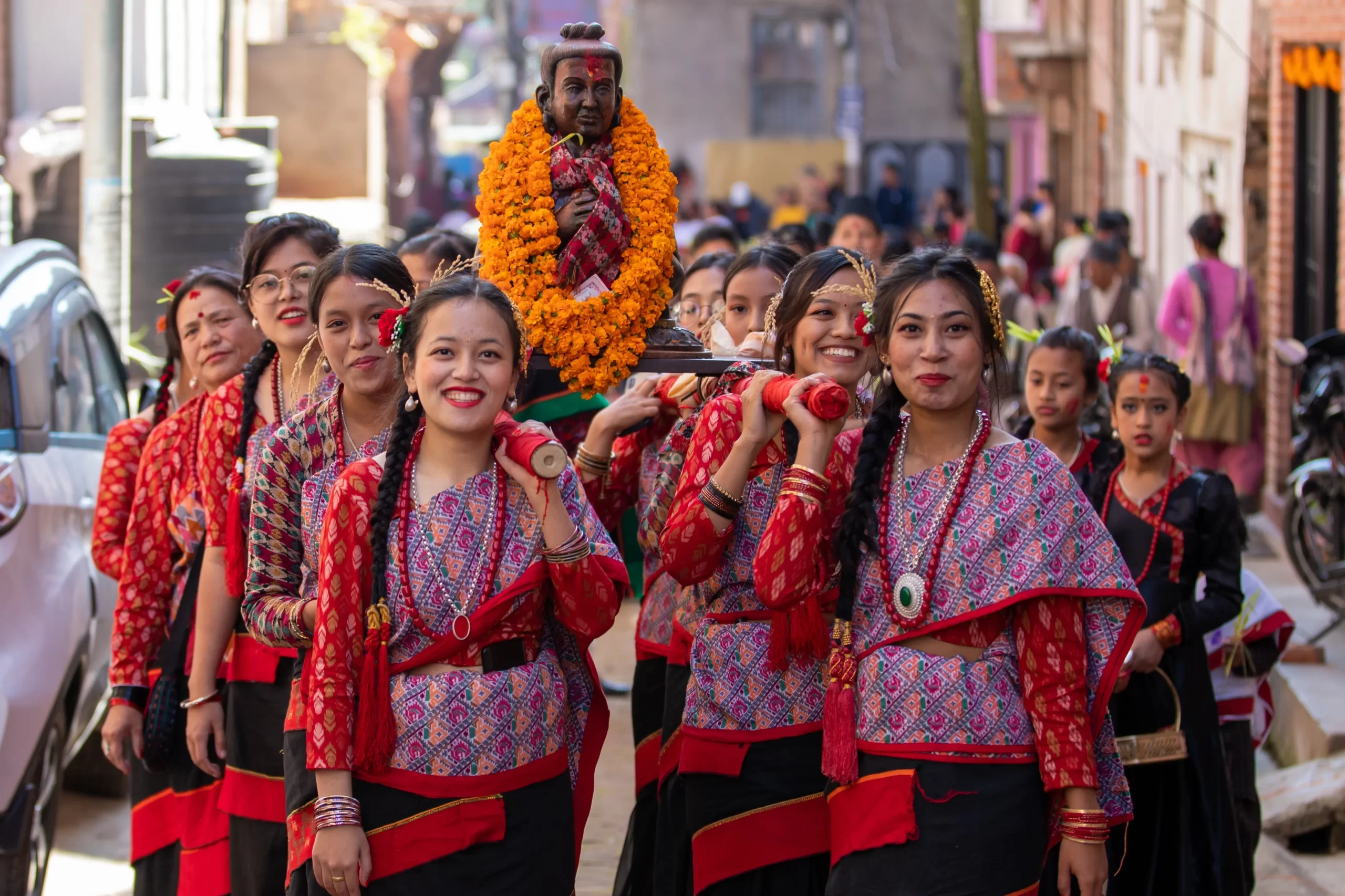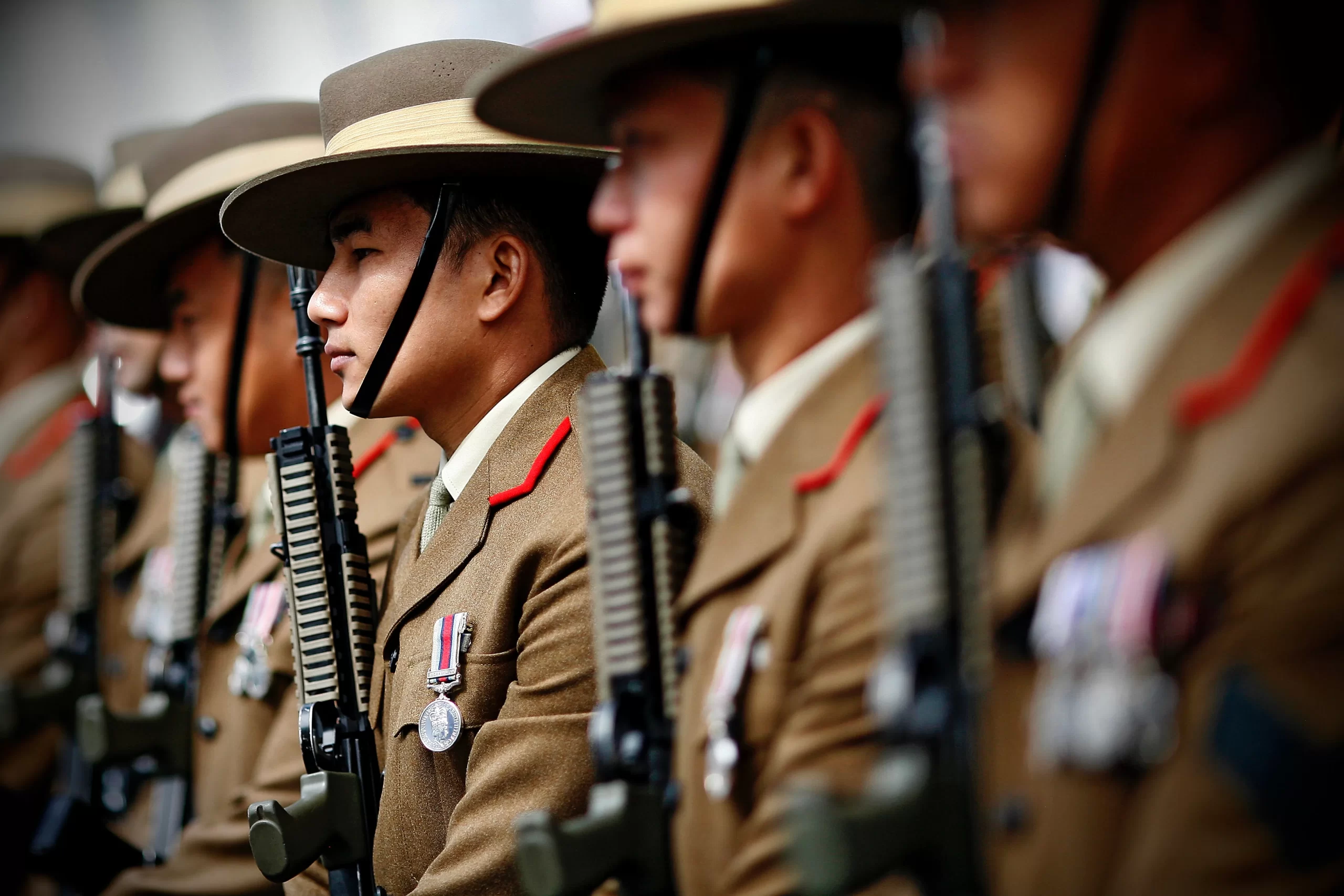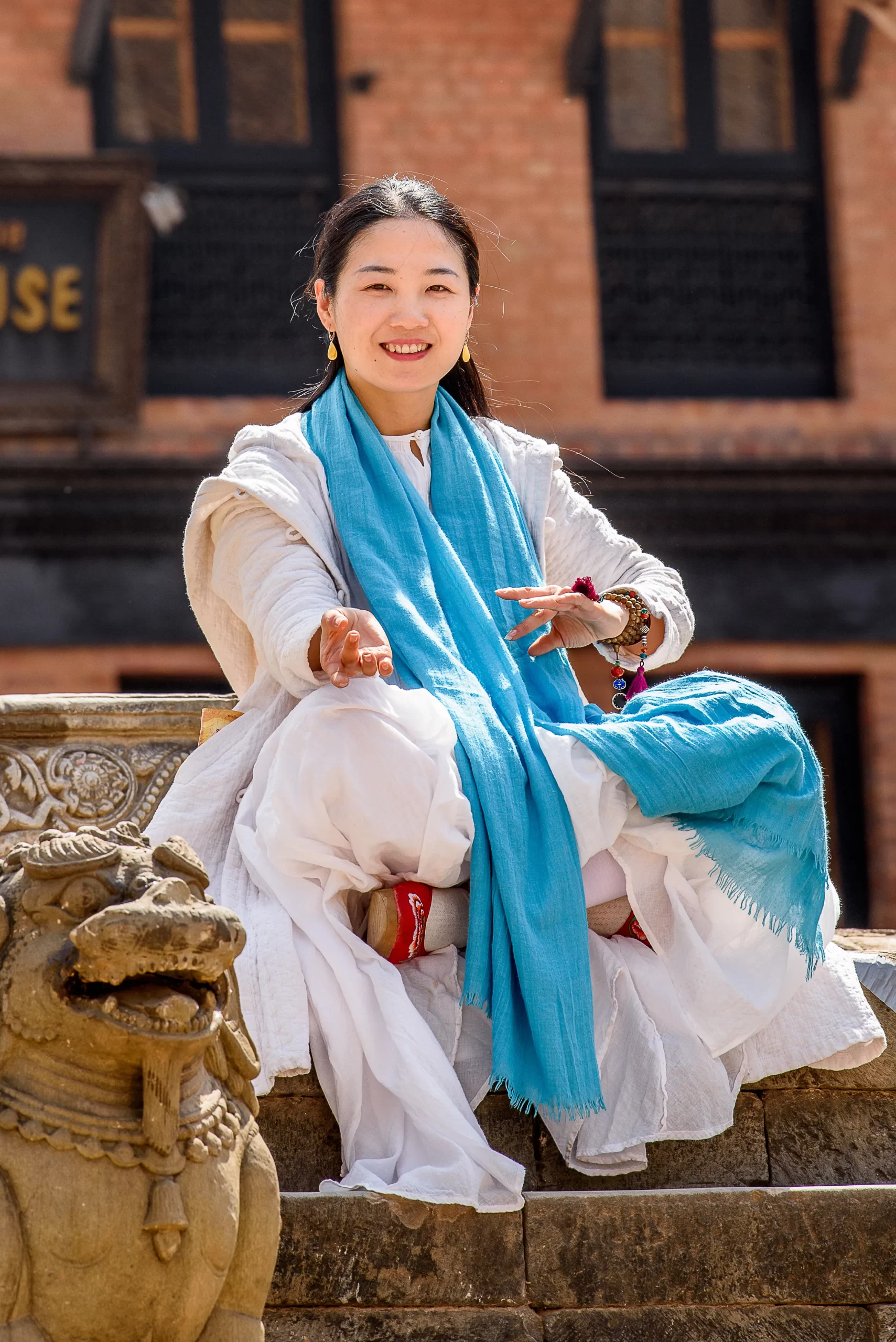Newari
The Newari people have lived in the Kathmandu-valley since ancient times. The fertile soil of the Kathmandu-valley and the trade with Tibet and India brought prosperity. The cross-cultural influences are reflected on the valley’s cuisine, arts and architecture as well. The small town of Bandipur is a famous tourist spot which preserved the traditional Newari architecture.
The Kumari, whose picture you can see on the right side when entering the restaurant, is a young girl who is worshipped as a goddess by the newari people.

There are several famous legends of the origin of this tradition. According to one of the most famous one, a king ruled by following the guidance of the goddess Taleju, but he never saw the goddess, who was always hidden behind a screen. One day he decided he had to see her and looked behind the screen to see the goddess, who left in a rage and told the king that from now on she would no longer give advice and would only return in the form of a little girl. Kumari girls are selected before puberty. To be a kumari, a girl must have the “32 perfections” such as black hair and eyes, smooth skin, neat teeth, soft hands, etc. After their selection, they live separately from the community and have to sit in one place for a few hours every day and welcome the believers. Several kumari exist at the same time, living in separate regions. It is believed that during the first menstruation, the goddess also leaves their body, so after that the girls return to their ordinary lives.
The Kathmandu-valley was ideal for rice plantations, so rice became a staple food. Additionally, buffalo meat is also popular. Buffalo meat is used for religious purposes as well, as it is given as a sacrifice to gods. Their most famous food, which also shows Tibetan influences, is the buffalo momo, a dumpling filled with meat. Our favourite is the jhol momo, in which we serve the buffalo meat filled momos in a spicy tomato soup.


Nepal
Situated between India and China, Nepal has extremely diverse geographical and climatic features. It is slightly larger than one and a half times that of Hungary and is populated by around 30 million people.

Newari
The fertile soil of the Kathmandu-valley and the trade with Tibet and India brought prosperity. The cross-cultural influences are reflected on the valley’s cuisine, arts and architecture as well.

Magar / Gurung and Gurkha warriors
The Magar and Gurung people live in the hilly region in the western part of Nepal in small communities among the rice paddies. The beautiful panorama of the Annapurna range can be seen from their most famous village, Ghandruk.

Chhettri
The Chhettri were one of the groups of the Khas Hindu community, one of the highest levels of the old caste system. They were the Kshatriya warriors who were the defenders of the system.

Sherpa
The Sherpas are perhaps the best known ethnic group in Nepal. They live high in the mountains of eastern and central Nepal. Originally from Tibet, they crossed the mountains more than 500 years ago.

Tea in Nepal
Tea production in Nepal is relatively young, having only started in the 1960s. Ilam is located in eastern Nepal, about 600 km from Kathmandu.

The Flavours of Nepal
Nepal's flavours are deeply rooted in the country's rich cultural and geographical diversity. The country's cuisine is based on a unique blend of spices such as cardamom, Roman cumin, coriander and fenugreek seeds, which together provide an unforgettable taste experience.

Nepal
Situated between India and China, Nepal has extremely diverse geographical and climatic features.

Newari
The fertile soil of the Kathmandu-valley and the trade with Tibet and India brought prosperity.

Magar / Gurung and Gurkha warriors
The Magar and Gurung people live in the hilly region in the western part of Nepal in small communities among the rice paddies.

Chhettri
The Chhettri were one of the groups of the Khas Hindu community, one of the highest levels of the old caste system.

Sherpa
The Sherpas are perhaps the best known ethnic group in Nepal. They live high in the mountains of eastern and central Nepal.

Tea in Nepal
Tea production in Nepal is relatively young, having only started in the 1960s.

The Flavours of Nepal
Nepal's flavours are deeply rooted in the country's rich cultural and geographical diversity.
Reservation
Új foglalás érkezett!
Opening hours
Monday: CLOSED
Tuesday: 11:30 - 23:00
Wednesday: 11:30 - 23:00
Thursday: 11:30 - 24:00
Friday: 11:30 - 24:00
Saturday: 11:30 - 24:00
Sunday: 11:30 - 23:00
Annapurna Nepáli Étterem
Budapest, Ráday u. 29, 1092
Nyitvatartás
Hétfő: ZÁRVA
Kedd – Szerda: 11:30 – 23:00
Csütörtök – Szombat: 11:30 – 24:00
Vasárnap: 11:30 – 23:00
